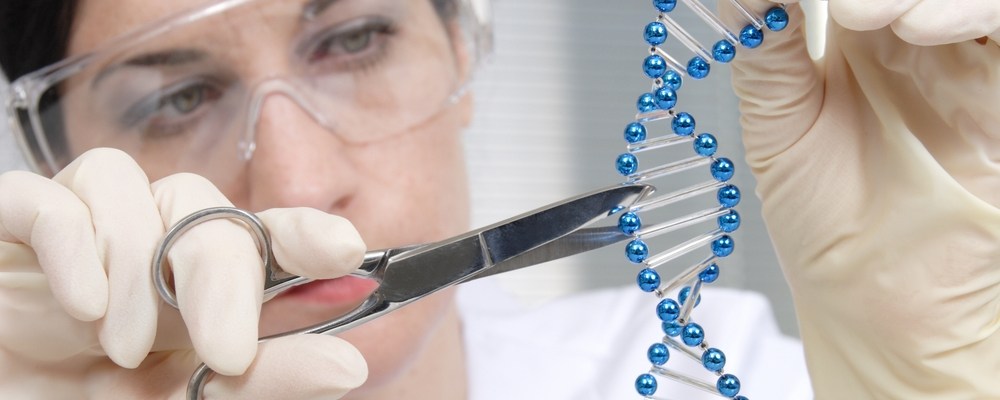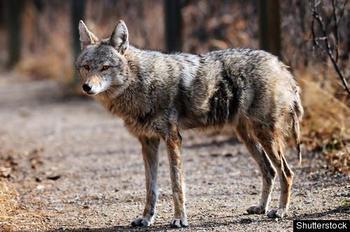|
Scientists today use biotechnology to insert and remove genes, altering characteristics in various organisms. This process of “genetic engineering” involves manipulating an organism’s genome—the collection of genetic material, including DNA and RNA. Interestingly, these techniques utilize naturally occurring organisms and phenomena. Many organisms possess DNA editing tools, such as nuclease enzymes, that regulate DNA reproduction. Scientists use these enzymes to selectively cut pieces of DNA. Remarkably, viruses are actually rudimentary agents that manipulate the genomes in your cells. Whenever a virus infects a cell, the virus inserts genetic material into a cell to hijack the cell’s resources in order to make copies of the virus. Scientists and doctors utilize this process to insert pieces of DNA into an organism as a form of gene therapy or for molecular manufacturing purposes.
While we have not gone as far as designing babies, we have successfully used genetic engineering in areas like agriculture and science. For instance, pest-resistance genes have been introduced into various crops, improving yields. Further, scientists use genetically altered cells to model diseases to test drug effectiveness. They are even using genetic engineering to alter human cells for study, selectively adding and removing oncogenic genes to determine their roles in cancer. While it is theoretically possible to alter genes in a human embryo, commitment to ethical research has so far prevented such feats. However, the wall of ethics seems to be crumbling under the pressure to push the boundary of science. A research group in China caused considerable debate when it recently published its research on employing genetic engineering to alter human embryos. In this study, the research group investigated the use of CRISPR/Cas9, a specific gene-editing tool, in human cells. They believed there was a “serious knowledge gap” in our understanding of DNA repair mechanisms in early human embryos. To assuage ethical concerns, the team used tripronuclear (3PN) zygotes, egg cells fertilized by 2 sperm, which do not develop normally into humans. The scientists found that CRISPR/Cas9 was able to remove the target gene, but that the embryo’s gene repair mechanism was not effective. Further, the CRISPR/Cas9 was not specific and cleaved non-target genes. The study highlighted the shortcomings of the CRISPR/Cas9 gene editing tool in removing specific genes. Even more pressing, the scientists raised alarm for genetically modifying human embryos for research, even if those embryos would not fully develop. It is important to consider the possibilities and implications of genetically altering normal embryos that will develop into full grown humans. Even though many question the ethics of genetically engineering babies, such measures can offer immense benefits to some. For now, gene therapy is still limited in its effectiveness. For children born with life-threatening defects, it simply is not fast enough to save them. Further, curing some diseases requires altering every cell in the body. For Down’s Syndrome, the embryo offers a more promising pathway for a cure. People with Down’s Syndrome have an extra 21stchromosome. Deleting the extra chromosome 21 during the embryo stage ensures that future cells of the fetus will have the normal number of chromosome 21. The embryo would develop normally after the genetic modification. In some cases, genes can cause irreversible defects once the child matures, and the disease-causing gene must be identified and corrected early. If doctors wait until adulthood to remove the disease-causing genes, some organs like the brain may not be able to recover. On the other hand, genetically engineering humans has many potential drawbacks. Such procedures are expensive and would thus discriminate against the poor. Citizens in poorer countries and communities would not have equal access to the technology. Just like how plastic surgery has been used to help burn victims as well as for purely cosmetic purposes, the power of genetic engineering lends itself to arbitrary use. The enticing idea of buying superior intelligence or athletic ability could lead many to use genetic engineering simply for their personal improvement, rather than for saving lives or curing devastating diseases. Genetically engineering babies could create a group of humans with superior abilities. In turn, cultures that overvalue “natural” genetics would arise, paving the way for a new type of discrimination against those born “without modification.” Not to mention, the environment clearly plays a critical part in a child’s development. Humans may overlook the environment, perhaps offering less quality care with the belief that the “perfectly made” child would inevitably become successful. Further, natural selection is still at play. Many people may opt to have a “useful” gene, decreasing genetic diversity. If the environmental conditions change suddenly against the once “useful” gene, there is a chance that many people with that gene would be wiped out by selective pressures. For example, having two copies of the sickle cell gene causes the disease, but having one copy makes one immune to malaria. A malaria outbreak could kill many if most people chose to not have any copies of the sickle cell gene. Considering both benefits and drawbacks, I cannot in good conscience support genetic engineering without the strictest regulations and ethical education. Just because we can do something does not mean we should. Nazi and Japanese human experimentation in WWII offer clear cases when science was used unethically. I have no doubt that we will eventually have the technology to safely modify an embryo‘s genome—allowing doctors to selectively and accurately alter physical development. Once technology has reached that point, the floodgates have opened. Black markets and loose law enforcement would make it almost impossible to ensure that the technology not be misused. Everyone, especially doctors, must understand the potentially horrible ramifications of misusing genetic engineering. Through a combination of law and ethical education, people will hopefully use genetic engineering in a responsible manner.
0 Comments
By Julia Zeh
Edited by Hsin-Pei Toh Don’t tell Road Runner, but… coyotes in New York City? That was how most people reacted last week when reports said that a coyote had been spotted in Riverside Park. A wild coyote chase across Manhattan soon began as authorities spent days searching for this wily canine. Most know about coyotes from the Looney Tunescartoons, in which Road Runner successfully evades falling anvils that Wile E. Coyote uses to catch him. Coyotes are relatively small, omnivorous canines closely related to wolves. Coyotes were originally found in the Western plains of the United States, but they have spread out over time to inhabit most of North America. In fact, since the arrival of settlers, coyote populations have thrived and expanded. Even more recently, an increasing number of coyotes have been found to inhabit urban areas, particularly in cities such as Chicago, Washington D.C., and even New York City. What’s interesting about this urban population explosion, however, is that coyotes are not particularly fond of humans. Even more interesting is the fact that these coyotes actually live longer than those living in rural areas. Part of the reason for this is that coyotes in Northeastern US are far bigger and stronger than their counterparts anywhere else, because the former interbreeds with wolf populations. Furthermore, as the wolf population decreased due to human influence, the coyote population was in turn able to rise up and fill the niche, or ecological role, of wolves as medium-sized predators. They also reproduce faster than the latter, allowing them to thrive while wolves struggled. This allowed coyotes more habitat space, more prey, and an increase in other resources. Coyotes also represent the power of rapid evolution and adaptive change. These animals have been experts at responding to environmental changes over the past few centuries, particularly those caused by human settlement and later urbanization. It is for this reason that they have entered urban areas: to quickly adapt to these new environmental conditions, which are not particularly conducive to medium and large sized mammals. Without competition from the latter, there is much for the coyote to take advantage of in this new niche. But this urban coyote development is nothing to fear. Although you’re probably not used to hearing about anything larger than a raccoon or someone’s pet dog wandering city streets, the coyotes don’t actually pose a threat to humans. On the contrary, they actually do some good to a few urban environments. For example, they control populations of deer and Canada goose, two organisms which have caused problems nationally, especially just outside of the cities into which coyotes have entered, with their recently rising populations due to loss of top predators. As top predators around the globe become increasingly threatened and endangered, coyotes are an important lesson in ecosystem dynamics and an example of what happens when a top predator population is decreased or eliminated. This helps scientists to model what happens when a smaller predator rises up to try and fill a vacant niche, which then impacts the characteristics of the smaller predatory population as well as the other populations in the ecosystem with which the species shares resources. Ecosystems are incredibly complex and fragile webs in which everything is connected and dependent on each other for survival. When just one species, no matter how big or small, is impacted—and in extreme cases, driven to extinction—the whole ecosystem feels the effects. This is true for all populations, including humans, which interact with coyotes, in ecosystems everywhere. What happens to one species is something of importance to all other species, and thus is an important consideration for humans who are, after all, still members of this complicated and vital interconnectedness of life on Earth. |
Categories
All
Archives
April 2024
|


